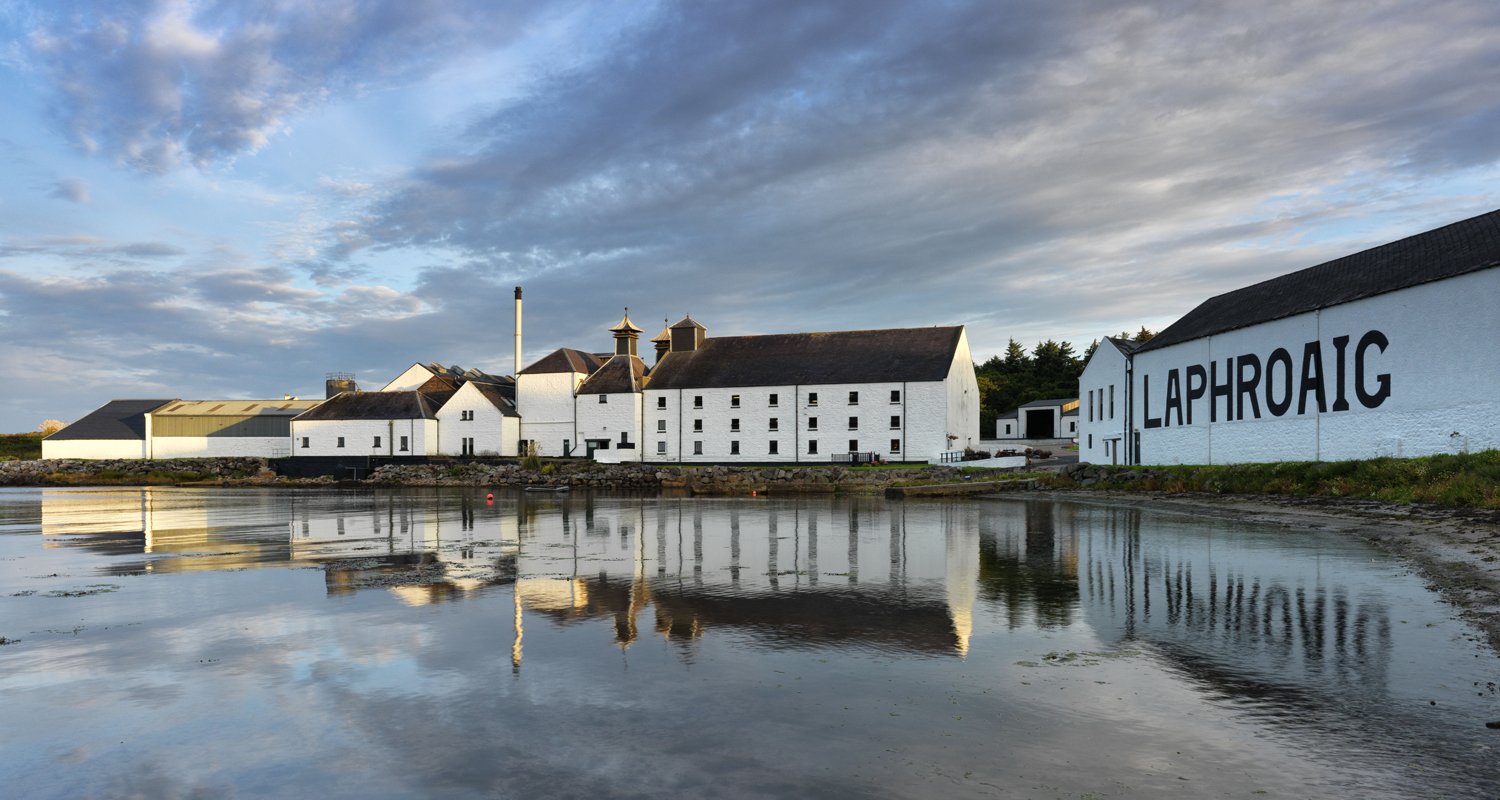Bessie Williamson: Laphroaig’s guardian angel
Regarded as the ‘first lady of Scotch’, Bessie Williamson was so much more than one of Scotland’s first female distillery managers. From safeguarding Laphroaig during the war to exhibiting philanthropic kindness and even saving her warehouseman’s life, Williamson left an indelible mark on both whisky and the world.
Bessie Williamson was not a native Ileach, yet she grew to become one of the island’s most famous and beloved residents, as well as a true pioneer as one of the first female Scotch whisky distillery managers who – perhaps unknowingly – is a hero for women in the industry today.
Born in Glasgow in 1910, Elizabeth Leitch Williamson was keen to be a teacher, studying art at Glasgow University and later secretarial administration at night school. However it was a short holiday to Islay in the summer of 1934 with a friend that changed her plans forever.
She took a temporary job as a shorthand typist at Laphroaig distillery (intending to only stay for a short period), but so impressed owner Ian Hunter that she was promoted to office manager. It was fortuitous timing, as just four years later Hunter suffered a stroke that severely limited his capacity to run and operate Laphroaig on his own.
Williamson was asked to step up, taking on more responsibility as Hunter’s right-hand woman, becoming chair and even taking a small stake in the business – roles that were exceedingly rare for a woman at that time. In his book, Whiskey Women, author Fred Minnick likened the enormity of responsibility Hunter gave Bessie to ‘…Henry Ford letting his secretary run Ford Motors while he travelled.’
Watchful eye: Bessie Williamson oversaw every aspect of Laphroaig’s operation
During World War II Laphroaig was used as an ammunitions base by the British army. Williamson was given the task of managing the site, maintaining the distillery’s autonomy over its buildings and usage, and – most importantly – keeping scores of soldiers away from Laphroaig’s stocks of maturing whisky. She even managed to spare warehouse keeper Ian MacLean from national duty by appealing to the war office that his role was ‘indispensable’ due to his ‘intimate knowledge of… this valuable stock.’ She not only safeguarded Laphroaig’s maturing whisky but also likely saved his life.
As well as continuing to run Laphroaig’s business matters, Williamson signed off on all incoming and outgoing shipments of bullets, artillery shells and bombs. Minnick writes: ‘This must have brought Williamson considerable stress…. Williamson, a Glasgow University graduate turned secretary turned distillery manager, became an important Islay war operative.’
Even after the war, Williamson was so instrumental to Laphroaig’s operations that when Hunter passed away in 1954 he left her the distillery, along with his home, Ardenistiel House, and the small island of Texa off Islay’s south coast.
Making history
Although Laphroaig had been owned by women before, none had had much involvement in its operation, instead passing the responsibility onto male relatives who were often better placed to manage a business. In naming Williamson in his will, she became the first Scottish female distillery manager and owner in the 20th century.
Lasting legacy: Bessie Williamson’s careful management has enabled Laphroaig to flourish
Much of the day-to-day production was left to longtime brewer Tom Anderson, while Williamson focused on growing Laphroaig’s global footprint, particularly in the US. Hunter had made significant effort growing Laphroaig in the States in the years running up to and following Prohibition (1920-33), giving Williamson a solid foundation to work from.
Laphroaig thrived under her leadership, producing peated single malt for the large blending houses in Glasgow, Leith and Perth. She told a visiting documentary crew in the early 1960s that: “Islay whisky is famous as an essence for blending purposes. Islay whisky by itself is rather too powerful for most people, but some people do like it as a liqueur whisky. There’s an increasing market for the Islay whiskies; we can’t supply the demand we have for our whisky.”
Such was her knowledge of the Scotch business and US market that in 1961 the Scotch Whisky Association appointed her as North American spokesperson, inviting her to tour the country lecturing about whisky production.
She was quoted in the Chicago Tribune in 1965 offering advice to Americans for how to drink Scotch: “Take it slowly, do not toss it down. Whisky should be sipped either neat or with water when the drinker is relaxed or wants to become relaxed. The fashionable time is before or after dinner, or after a hard day at the office.”
A global success
It was during these visits to the US that Williamson met her husband, the Canadian broadcaster Wishart Campbell, the grandson of an Islay minister who had emigrated to Canada in the 19th century.
After a short romance they married in 1961, living together at Ardenistiel House, and while Williamson focused mainly on Laphroaig’s operation she also immersed herself into Islay life, playing an important role with the Scottish Women’s Rural Institute, organising ceilidhs, concerts and fetes to raise money for local causes. Such was her renowned kindness and philanthropic work that she was awarded the Order of St John by Queen Elizabeth II in 1963.
Williamson was witnessing firsthand the popularity of Scotch whisky in overseas markets, and understood that for Laphroaig to compete against other major producers the business would need significant investment. Between 1962-72 she sold the distillery to US-based Seager Evans & Co., continuing in her roles as chairman and managing director until her retirement in 1972. The investment paid off, as Seager’s American dollars allowed Laphroaig to expand from two stills to seven.
Demeter Collection: The auction features a bottle of Laphroaig 25 Year Old: The Bessie Williamson Story
Williamson’s business savvy – entirely learned on the job through her time at Hunter’s side, ensured Laphroaig’s survival in what was about to be a tumultuous time for the Scotch industry. It was a significant period that she didn’t get to witness – Bessie passed away in 1982.
Williamson faced numerous challenges in her time at Laphroaig, from World Wars to economic downturns, with her gender no doubt a significant barrier. She once told an Associated Press reporter: “Yes, it is odd for a woman to be a distiller of whisky, but you don’t have to be an odd woman to be a distiller.”
The Demeter Collection
Regardless of setbacks, her leadership, vision and resilience guided the distillery through turbulent times, ensuring its continued success and global renown. Under her stewardship, Laphroaig's iconic whisky soared in popularity, captivating the palates of whisky enthusiasts worldwide.
John McDougall, the whisky industry consultant who succeeded Bessie as distillery manager, said: “It was an honour to work with Bessie Williamson and I will never forget her words of wisdom. So far as I am concerned, she has never left Laphroaig.”
The OurWhisky Foundation’s upcoming fundraising auction, the Demeter Collection, features Laphroaig 25 Year Old: The Bessie Williamson Story, a limited edition travel retail exclusive released in 2019 to honour the late distillery manager’s legacy. The expression is presented in a beautifully crafted book that allows purchasers to discover the story of Bessie’s legacy in depth, and includes tasting notes and a message from former distillery manager, John Campbell.
The lot also includes a VIP tour of Laphroaig distillery and Bessie Williamson-inspired tasting for two, plus accommodation on Islay for one night.
The Demeter Collection auction will run 29 March - 8 April 2024 at whiskyauctioneer.com.








